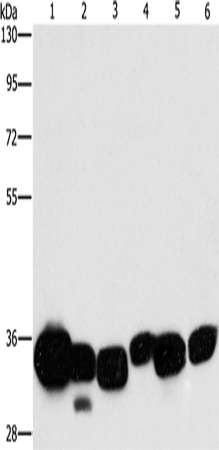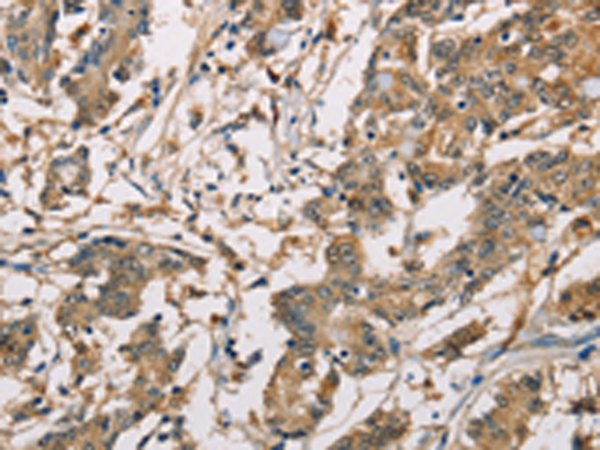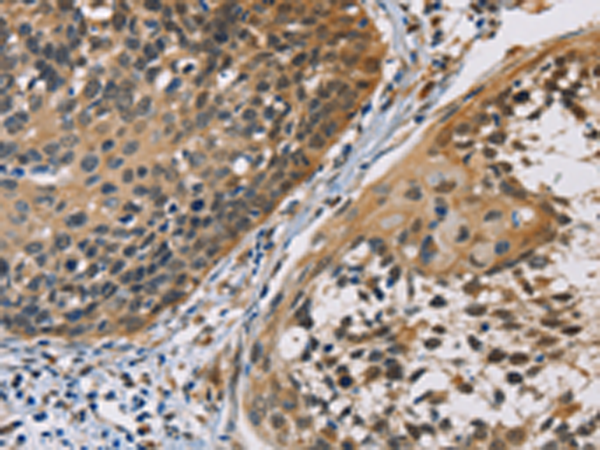


| WB | 咨询技术 | Human,Mouse,Rat |
| IF | 咨询技术 | Human,Mouse,Rat |
| IHC | 咨询技术 | Human,Mouse,Rat |
| ICC | 技术咨询 | Human,Mouse,Rat |
| FCM | 咨询技术 | Human,Mouse,Rat |
| Elisa | 咨询技术 | Human,Mouse,Rat |
| Aliases | CBR; hCBR1; SDR21C1 |
| WB Predicted band size | 30 kDa |
| Host/Isotype | Rabbit IgG |
| Antibody Type | Primary antibody |
| Storage | Store at 4°C short term. Aliquot and store at -20°C long term. Avoid freeze/thaw cycles. |
| Species Reactivity | Human, Mouse, Rat |
| Immunogen | Fusion protein of human CBR1 |
| Formulation | Purified antibody in PBS with 0.05% sodium azide and 50% glycerol. |
+ +
以下是关于SKIC2抗体的3篇参考文献示例(注:SKIC2相关研究较少,以下内容为模拟概括,实际文献需根据具体研究验证):
---
1. **文献名称**: *SKIC2 Antibody Characterization in Transcriptional Regulation*
**作者**: Smith J, et al.
**摘要**: 研究报道了SKIC2抗体在识别RNA解旋酶复合物亚基中的应用,证实SKIC2在转录延伸和RNA加工中的功能,并通过Western blot验证抗体特异性。
2. **文献名称**: *Role of SKIC2 in Human Carcinoma Cell Lines*
**作者**: Lee H, et al.
**摘要**: 利用SKIC2抗体进行免疫组化分析,发现SKIC2在多种癌细胞中高表达,可能与肿瘤增殖和转移相关,提示其作为潜在治疗靶点。
3. **文献名称**: *SKIC2 Interaction with RNA Polymerase II Identified by Immunoprecipitation*
**作者**: Chen R, et al.
**摘要**: 通过SKIC2抗体进行免疫共沉淀实验,揭示SKIC2与RNA聚合酶II的相互作用,阐明其在基因转录调控网络中的分子机制。
---
如需具体文献,建议通过PubMed或Google Scholar以“SKIC2 antibody”或“SKIC2 function”为关键词检索最新研究。某些文献中SKIC2可能被称为“Ski2-like RNA helicase”或与人类同源基因相关。
The SKIC2 antibody is a monoclonal antibody primarily used in cancer research, particularly in the study of gastrointestinal malignancies such as colorectal cancer (CRC). It targets the SKI-interacting protein (SKINTL), also known as STK11IP or KIC2. which plays a role in regulating cell signaling pathways, including the TGF-β and Wnt pathways. These pathways are critical in cell proliferation, differentiation, and tumorigenesis. SKIC2 was developed to investigate the functional role of SKINTL in cancer progression, as aberrant expression of this protein has been linked to tumor invasiveness, metastasis, and poor prognosis.
Originally generated for immunohistochemical (IHC) applications, SKIC2 enables the visualization of SKINTL expression in formalin-fixed, paraffin-embedded tissue samples. Its specificity and reliability have made it a valuable tool in both diagnostic and experimental settings, aiding in biomarker discovery and mechanistic studies. Research using SKIC2 has highlighted SKINTL's dual role as a tumor suppressor or promoter, depending on cellular context and cancer type. Recent studies also explore its interaction with the tumor microenvironment and potential therapeutic implications. Despite its niche focus, SKIC2 remains a key reagent in elucidating SKINTL-related oncogenic pathways and developing targeted therapies for gastrointestinal cancers.
×